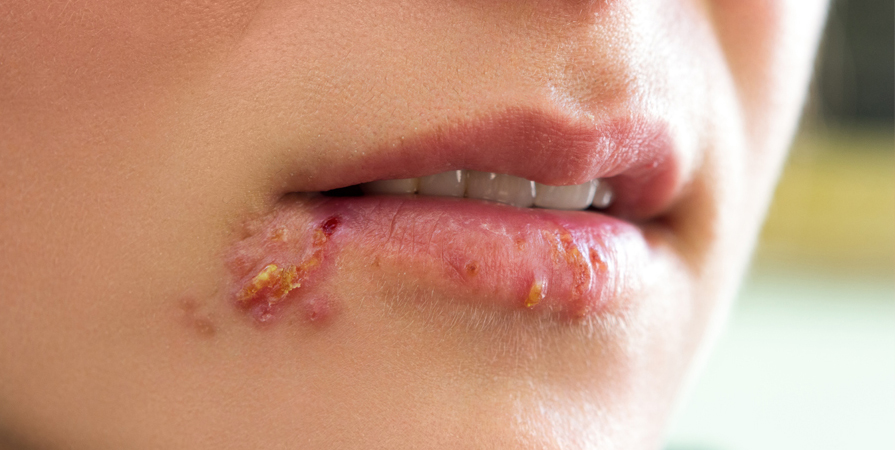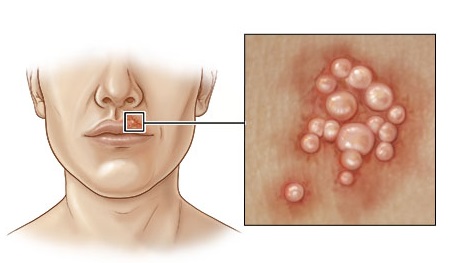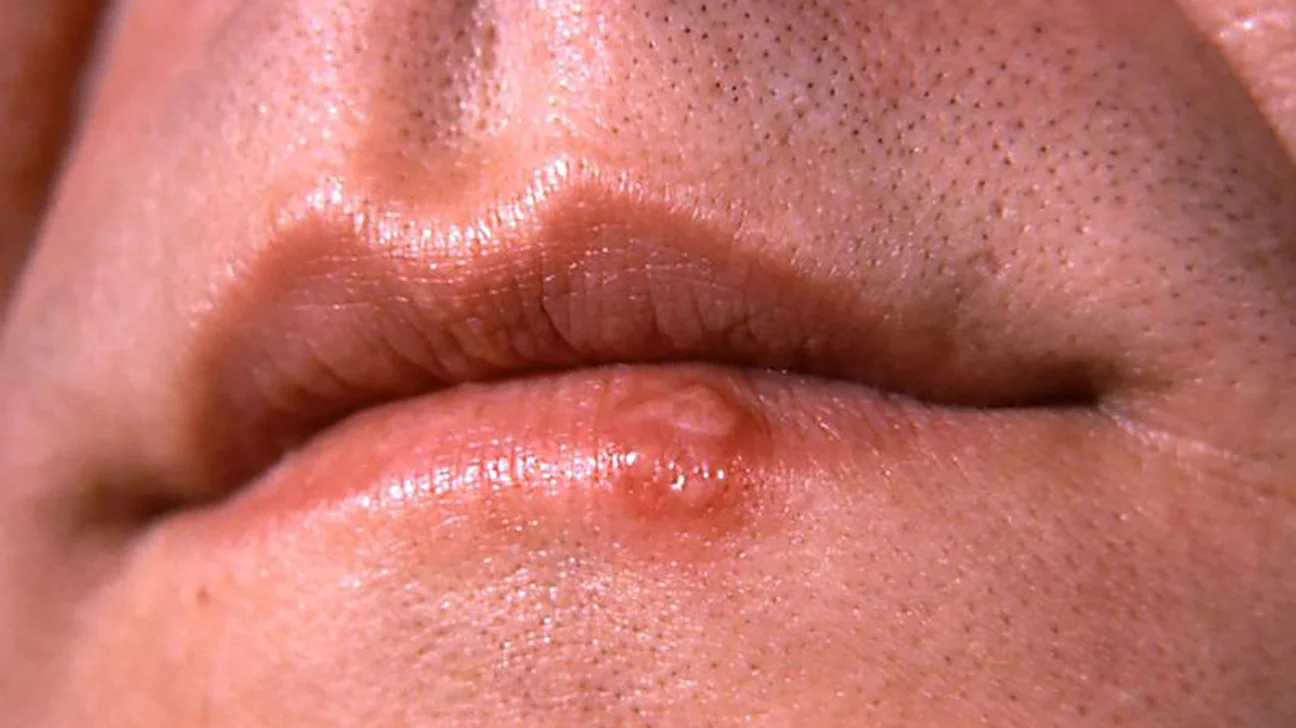Herpes is a common viral infection that can cause painful sores and blisters.

There are two main types of herpes viruses:
- herpes simplex virus type 1 (HSV-1) and
- herpes simplex virus type 2 (HSV-2).
Herpes simplex virus type 1 Picture

While HSV-1 is typically associated with oral herpes and cold sores, HSV-2 is known for causing genital herpes.

One question that often arises is whether herpes can be spread through sharing food and drinks. In this blog post, we will explore the risks associated with sharing food and drinks in the context of herpes transmission.
Table of Contents
Understanding Herpes Transmission:
Before delving into the specific risks related to sharing food and drinks, it’s important to have a basic understanding of how herpes is transmitted. Herpes is primarily spread through direct contact with the infected area, which can include oral, genital, or even anal regions. The virus can be transmitted through skin-to-skin contact, kissing, and sexual intercourse.
It’s important to note that herpes is most contagious when the sores or blisters are present and during the initial outbreak. However, the virus can still be spread even in the absence of visible symptoms, a phenomenon known as asymptomatic shedding.
Can Herpes Spread Through Sharing Food and Drinks?
The risk of herpes transmission through sharing food and drinks is relatively low, but it is not entirely impossible. Herpes viruses are fragile and do not survive long outside the human body. The primary mode of transmission is direct contact with the infected area.
Sharing Utensils and Food:
The risk of herpes transmission through shared utensils or food is minimal. The virus does not thrive on surfaces, and transmission through inanimate objects is generally low. However, during an active outbreak, caution should be exercised as direct contact with the infected area can increase the risk of transmission. Educating individuals about their herpes status and promoting hygiene practices can further mitigate potential risks.
Drinking from the Same Glass:
Sharing a glass or cup with someone who has herpes is generally considered a low-risk activity. The virus is not highly contagious through inanimate objects like glasses, and the saliva in the mouth contains enzymes that can help neutralize the virus. However, if the person has an active outbreak, it’s advisable to avoid sharing glasses to minimize any potential risk.
Eating from the Same Plate:
Similarly, the risk of herpes transmission through sharing plates or eating utensils is minimal. The virus is not well-suited for survival on surfaces, and the chances of transmission in this manner are low. However, if an active outbreak is present, it’s best to exercise caution and avoid sharing plates to be on the safe side.
Preventive Measures:
While the risks of herpes transmission through sharing food and drinks are relatively low, it’s crucial to take preventive measures to minimize any potential risk. Here are some practical tips:
- Avoid Sharing During Active Outbreaks: If someone has visible sores or is experiencing a herpes outbreak, it’s advisable to avoid sharing food, drinks, and utensils to reduce the risk of transmission.
- Practice Good Hygiene: Encourage good hygiene practices, such as regular handwashing, to reduce the risk of spreading herpes through contact with hands or surfaces.
- Use Utensils and Cups: Whenever possible, use separate utensils, cups, and plates to minimize direct contact and reduce the risk of transmission.
- Be Informed and Communicate: Open communication is essential. If you are aware that you or someone you are sharing food and drinks with has herpes, discussing it openly can help make informed decisions and take necessary precautions.
While the risk of herpes transmission through sharing food and drinks is generally low, it’s essential to be aware of the potential risks and take appropriate precautions, especially during active outbreaks. Practicing good hygiene, avoiding sharing during visible outbreaks, and maintaining open communication can contribute to minimizing the risk of herpes transmission in social settings. Remember that the best approach is to be informed, take preventive measures, and be considerate of others’ health and well-being.
